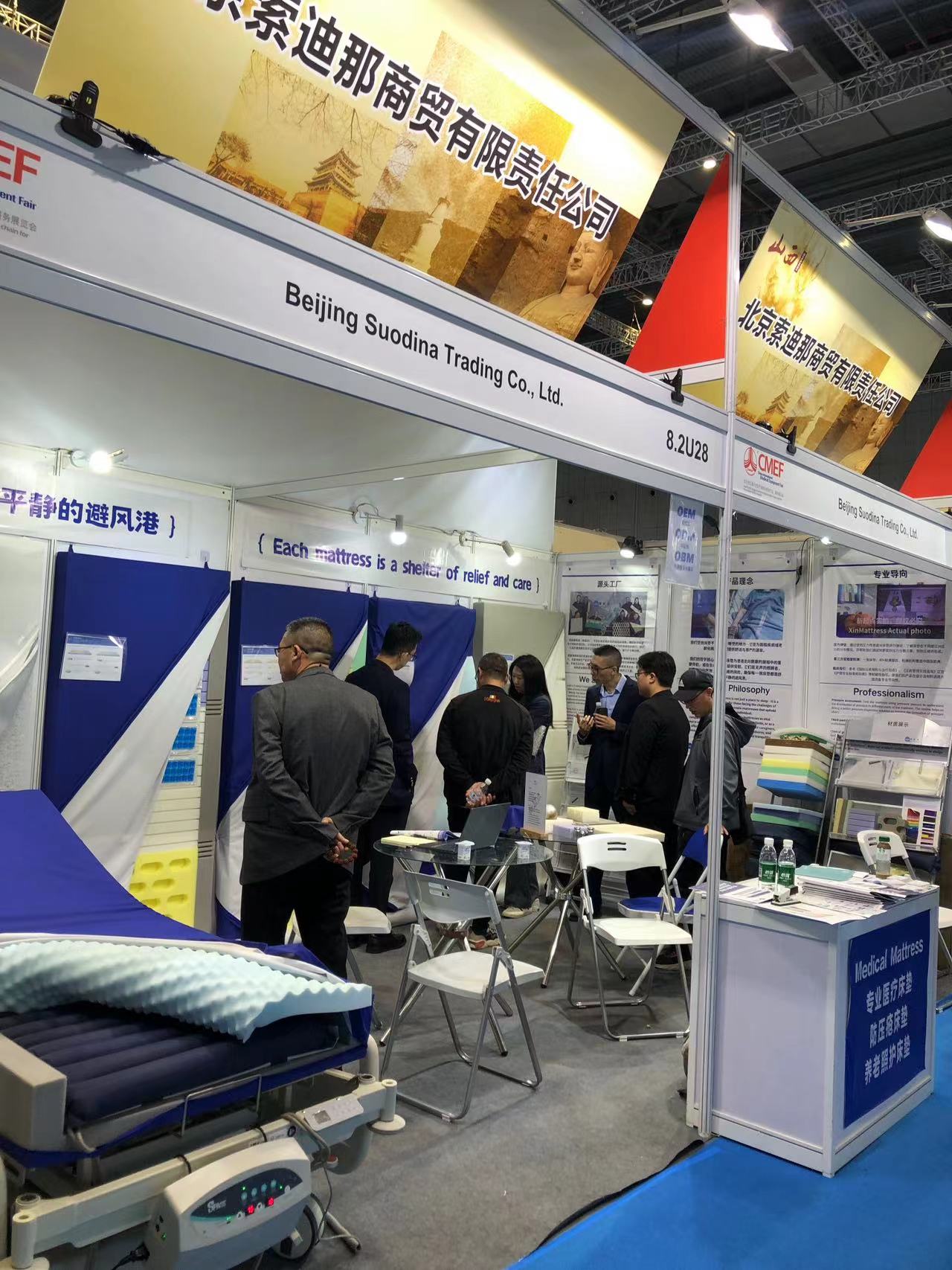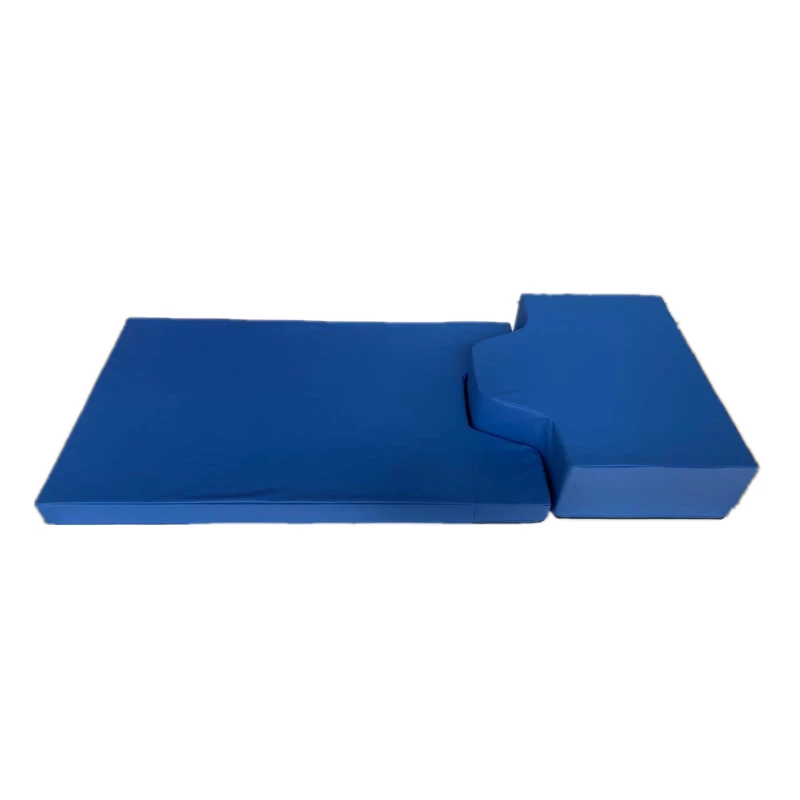Best Types of Air Mattresses for Hospital Beds Pressure Relieving Mattress Guide
- Introduction: Types of Air Mattresses for Hospital Beds
- Exploring Pressure Relieving Mattress Technology
- Key Categories of Hospital Bed Mattress Types
- Technical Advantages and Innovations in Air Mattress Design
- Comparison Table of Leading Hospital Air Mattress Manufacturers
- Tailored Solutions and Customization for Patient Needs
- Real-World Clinical Applications: Success Stories with Air Mattresses for Hospital Beds

(types of air mattresses for hospital beds)
Introduction to Types of Air Mattresses for Hospital Beds
In modern healthcare environments, the selection of types of air mattresses for hospital beds
is pivotal for ensuring optimal patient outcomes. Hospital stays, particularly those involving limited mobility or long-term recovery, carry the risk of pressure ulcers and infection, making the choice of mattress far more than a matter of comfort. Demand for advanced pressure relieving mattresses is growing: according to a 2023 market analysis, over 53% of acute care hospitals globally deploy specialized support surfaces to manage high-risk patients. Understanding the distinctions among different hospital bed mattress types is crucial for clinical decision-makers, procurement teams, and care providers alike.
Exploring Pressure Relieving Mattress Technology
Pressure relieving mattresses represent an evolution beyond traditional foam or spring-based surfaces. At their core, these systems are engineered to redistribute body weight, minimize sustained localized pressure, and stimulate micro-movements that encourage healthy blood flow. Two principal technological variants have dominated recent hospital adoption:
- Alternating Pressure Air Mattresses: These incorporate dynamic air cells or bladders that cycle inflation and deflation, mitigating pressure and enhancing tissue perfusion. Research in 2022 indicated a 44% reduction in Stage II and above pressure ulcers among patients using alternating pressure systems compared to static mattress solutions.
- Low Air Loss Mattresses: These feature continuous airflow through perforated air cells, effectively reducing moisture, humidity, and heat build-up at the skin-interface. Studies reveal these mattresses lower overall sweating and skin maceration rates by 38% over conventional models.
Further technological advancements include adjustable firmness settings, microclimate management, integrated alarms, and wireless monitoring systems—each tailoring mattress performance to the nuanced needs of heterogeneous patient populations.
Key Categories of Hospital Bed Mattress Types
A comprehensive review of hospital bed mattress types encompasses a spectrum from basic foam to sophisticated, sensor-enabled air surfaces. The main classifications include:
- Static Foam Mattresses: Cost-effective and widely utilized for general care, these offer moderate pressure redistribution but limited adaptability for high-risk cases.
- Hybrid Mattresses: Combining foam and air cell technology, these mattresses merge the familiarity of foam with selectable dynamic cycles, offering both comfort and therapeutic efficacy.
- Alternating Pressure and Low Air Loss Mattresses: As detailed above, these dynamic surfaces form the cornerstone of advanced pressure injury prevention strategies in high-acuity settings.
- Bariatric Air Mattresses: Engineered for higher weight capacities (often up to 1,000 lbs/450 kg), bariatric solutions incorporate reinforced bladders and wider surface areas.
- Pediatric and Neonatal Mattresses: Specialized for the unique anatomy and pressure distribution needs of infants and children, incorporating softer, micro-perforated cells for gentle support.
This nuanced classification enables physicians, nurses, and therapists to align product choice with individual risk profiles, care protocols, and institutional resources.
Technical Advantages and Innovations in Air Mattress Design
The superiority of air-based types of pressure relieving mattresses lies in their adaptability and advanced engineering. Data from a 2023 hospital equipment survey indicated that wards employing state-of-the-art air mattresses reduced average patient repositioning needs from every 2 hours to every 4-5 hours—resulting in labor savings and heightened patient satisfaction.
- Self-adjusting Pressure Regulation: Next-generation systems use patient weight sensors for real-time adjustment of cell inflation, ensuring consistent pressure distribution across shifting postures.
- Microclimate Control Technology: Integration of temperature and humidity monitors with variable airflow provides bespoke microenvironment management, essential for long-term immobilized patients.
- Noise and Vibration Attenuation: Modern air mattresses employ advanced pump designs, achieving decibel levels as low as 35 dB, mitigating sleep disturbances and clinical alarm fatigue.
- Antimicrobial Surface Treatments: Silver-ion or copper-infused covers actively reduce bioburden, supporting infection control protocols—a 2020 trial showed a 27% decrease in surface contamination over untreated fabrics.
These features deliver tangible clinical benefits, aligning safety, comfort, and infection prevention in demanding hospital settings.
Comparison Table of Leading Hospital Air Mattress Manufacturers
| Manufacturer | Key Product | Core Technology | Weight Capacity (kg) | Microclimate Control | Infection Control Rating | Average Lifespan (years) | Recommended Patient Profiles |
|---|---|---|---|---|---|---|---|
| Stryker | IsoTour Dynamic | Alternating Pressure + Microclimate | 250 | Active (Humidity + Temp) | Clinically validated (A) | 8 | High/Very High Risk; ICU |
| Invacare | MicroAIR MA900 | Low Air Loss | 227 | Active | Antimicrobial (B) | 7 | Moderate-High Risk; Step-down Units |
| Hillrom | Envella AIR | Low Air Loss + Self-adjusting | 300 | Dual Sensor | Silver-Ion (A+) | 9 | Burns, Chronic Wounds |
| Arjo | Nimbus Professional | Hybrid Alternating/Static | 200 | Passive | Antibacterial (B) | 6 | General Wards |
| Drive DeVilbiss | Med Aire Plus | Alternating Pressure | 180 | Passive | Standard (C) | 5 | Low-Moderate Risk; Home Care |
This comparative analysis highlights not only technical differentiation but also clinical suitability, supporting procurement decisions and patient safety strategies.
Tailored Solutions and Customization for Patient Needs
Clinical evidence underscores that no single mattress fits every patient scenario. Many manufacturers now offer modular systems and configurable options to ensure that types of air mattresses for hospital beds can be aligned with individual clinical pathways:
- Profile-Based Presets: Advanced controllers store protocols for intensive care, post-surgery, bariatric, or palliative care, enabling rapid transitions as patient needs evolve.
- Size and Shape Modifications: Modular air cells can be adjusted to extend length, width, or provide targeted support for amputees, pediatric populations, or highly cachectic patients.
- Integrated Patient Positioners: Optional positioning wedges and bolster supports mitigate risk of patient migration and facilitate bedside procedures.
- Remote Monitoring and Data Integration: Cloud-enabled mattresses transmit usage and compliance data to nurse dashboards, supporting predictive risk analytics and audit trails.
Customization enhances not only clinical outcomes but also resource management, helping staff deliver care that is both safer and more efficient.
Real-World Clinical Applications: Air Mattresses for Hospital Beds Transforming Patient Care
The real impact of types of air mattresses for hospital beds is best understood in clinical deployment. For instance, a 2023 multi-center study across five acute care hospitals demonstrated a 48% decrease in hospital-acquired pressure injuries following implementation of alternating pressure and low air loss mattresses.
In critical care, rapid healing of existing wounds is paramount; case notes from a tertiary care ICU reported time to wound closure reduced from an average of 21 days down to just 13 days by converting to an advanced air mattress system. Geriatric wards utilizing high-quality microclimate-controlled beds noted a 31% improvement in skin integrity scores over a 90-day observation period.
Home healthcare providers have likewise observed remarkable reductions in emergency readmissions for pressure injury treatment—down by up to 26% among immobile patients using modern support surfaces versus legacy foam mattresses. These results collectively reinforce that the selection and application of appropriate hospital bed mattress types is an evidence-based intervention with enormous implications for patient health, staff efficiency, and institutional reputation.

(types of air mattresses for hospital beds)
FAQS on types of air mattresses for hospital beds
Q: What are the main types of air mattresses for hospital beds?
A: The main types of air mattresses for hospital beds are alternating pressure mattresses and low air loss mattresses. These are designed to reduce pressure and prevent bedsores. Some models combine both technologies for enhanced patient care.Q: How do alternating pressure mattresses work?
A: Alternating pressure mattresses cycle air through chambers to periodically change pressure points. This helps reduce prolonged pressure on any one area of the patient's body. Such functionality makes them a popular type of pressure relieving mattress.Q: What is the difference between a standard hospital bed mattress and an air mattress?
A: Standard hospital bed mattresses are usually made from foam or innerspring materials. Air mattresses use air-filled chambers to adjust support and relieve pressure. This makes air mattresses better for patients at risk of pressure ulcers.Q: What types of pressure relieving mattresses are used in hospitals?
A: Hospitals commonly use foam, gel, and air mattresses for pressure relief. Air mattresses, especially alternating pressure and low air loss types, are preferred for high-risk patients. The choice depends on patient needs and mobility.Q: Who should use an air mattress on a hospital bed?
A: Air mattresses are recommended for patients who are immobile or at risk of developing pressure ulcers. They provide superior pressure redistribution compared to other hospital bed mattress types. Doctors or nurses decide the most suitable mattress based on individual risk assessments.-
Sleep Tracking Mattress Maintenance TipsNewsJul.22,2025
-
Mattress Wave Designs for People with ArthritisNewsJul.22,2025
-
Mattress for Back Pain and Spinal AlignmentNewsJul.22,2025
-
Hypoallergenic Properties of Silicone Gel MattressNewsJul.22,2025
-
How a Gel Memory Foam Mattress Regulates TemperatureNewsJul.22,2025
-
Doctors’ Recommendations on Special Mattress for Back PainNewsJul.22,2025
-
Customizing a Patient Bed Mattress for Specific NeedsNewsJul.22,2025

